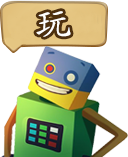
Visual perception is the brain’s ability to make sense of what the eyes see. It is the basis of many activities, including reading, solving crossword or Sudoku puzzles, and drawing. If your child has trouble with any of these activities that are age-appropriate, then you should start encouraging them to practice to enhance their visual perception.
This article contains some suggested activities that can boost a child’s visual perception, but bear in mind that pushing a child to excel at something they aren’t interested in can be more harmful than useful. These activities must be spontaneous acts, so try squeezing them into everyday routines to encourage visual perception naturally.
Copying shapes is one of the most important things your child can do. A child can have zero knowledge about different polygons, but they can start learning them by drawing edges and corners even if they don’t know the correct names. Introducing 2D and 3D shapes and asking your child to draw or copy them, sort them, or find similarities are all good activities that allow the subconscious to spot the differences and similarities without it seeming like work.
Solving puzzles is another great activity that will boost your child’s visual perception. Puzzles have become very diverse, including letter and word puzzles, picture puzzles, and even 3D puzzles. You can change the complexity of the puzzles according to the child’s progress.
Playing I Spy, is another great activity. I Spy can be played at home or outdoors. All you have to do is tell your kid that you spy something that meets a certain description. For example, you could say, “I spy something green.” As the child guesses what you spy, continue to describe the object.
Giving some cues about its name or the first letter will help them pay attention to all the objects they see as they narrow down the possibilities. The more children practice this game, the faster they improve their visual perception of the surrounding environment.
Matching pairs is another activity that is well-suited to younger children between three and seven years old. This activity can help them learn to easily spot relationships between objects, animals, colors, shapes, and more.
Memory games are a valuable addition to your list of activities. Ask your child to start memorizing the objects in the room for 20 seconds and then have them close their eyes and recite ten objects they saw. You can decrease time or increase the number of objects to increase the game’s difficulty and to help them progress faster.
Searching and sorting can be everyday activities. You can ask kids to tidy their rooms or to help organize a cupboard. Engaging them in household chores will prevent your kids from noticing that they are doing something educational to help their development.
Imagine that RoboGarden is accomplishing all of this and more. All the aforementioned activities are embedded in the missions, where you can find searching, sorting objects, guessing games, and practice noting similarities and differences. Your child can enjoy all of these visual perception games while learning how to program. Don’t let your child miss out! Register now for free.
